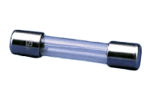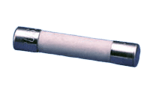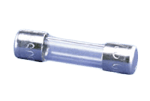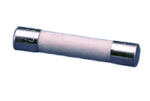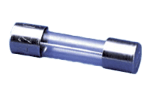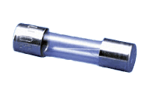Characteristics of Fuses for North American and Global Uses
Posted on 12/17/18 4:15 PM
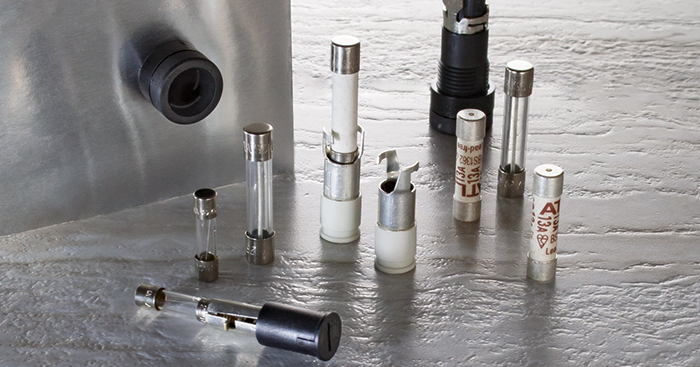
Built-in circuit protection is often designed into electrical or electronic equipment. The main function is to provide protection to both the equipment and equipment operator in the event of a circuit overload. Fuses are one way to provide that protection.
A fuse is a replaceable safety device that protects an electric circuit from excessive current. In simplest terms, it is two metal caps with a wire or strip in-between enclosed in a glass or ceramic tube. Some specialized fuse types are filled with sand. When the current exceeds the amount that the fuse is designed to withstand, the metal wire or strip melts, which opens the circuit path, and then disconnects the equipment from the power source. When a traditional fuse “blows” (disconnects), it must be removed and replaced with a new fuse.
Fuse Characteristics
Interpower offers fuses for both North American and global uses. It is important to note that while the terminology is similar for North American and international fuses, the actual characteristics are usually different. This is due to the differences in standards to which the fuses are built. While there are many different kinds of fuses available, the following are the examples of the ones that Interpower offers.
North American Fuses
For North American fuses, the breaking characteristics are defined as “fast-acting” and “time-delay.” Both versions come in either a standard glass, low-breaking capacity construction or in a sand-filled ceramic, high-breaking capacity construction. North American fuses come in two sizes: ¼ x 1¼-inch or 5 x 20mm. Standards to refer to include: UL 248-1 and CSA 22.2 no. 248.1.
Fast-Acting
A fast-acting fuse will open on overload and short circuits very quickly. These fuses are used in equipment where there are no transient in-rush currents. They offer protection for equipment that cannot withstand current overloads, even briefly. Fast-acting fuses are typically constructed with a single strand of wire or strip of metal.
Examples of North American Fast-Acting Fuses
| Fast-Acting ¼ x 1¼ Inch Glass Fuse |
Fast-Acting ¼ x 1¼ I Inch Ceramic Fuse |
Fast-Acting 5 x 20mm Glass Fuse |
|---|---|---|
|
|
|
|
| Fast-acting ¼ x 1¼ inch glass fuses—Different varieties available; all with a rated current ranging from 1/8A to 6A, a voltage rating of 250VAC, and a breaking capacity of either 35A, 100A, 200A or 10000A. | Fast-acting ¼ x 1¼ inch ceramic fuses—Different varieties available; all with a rated current ranging from 1/2A to 20A, a voltage rating of 250VAC, and a breaking capacity of either 35A, 100A, 200A, 750A, or 1500A. | Fast-acting 5 x 20mm glass fuses—Different varieties available; all with a rated current ranging from 1/4A to 8A, a voltage rating of either 125VAC or 250VAC, and a breaking capacity of either 35A, 100A, 200A or 10000A. |
Time-Delay
A time-delay fuse is designed to withstand a heavy amount of current overload for a limited amount of time. They are used in equipment that can sustain a brief overload situation; typically where loads are inductive, such as equipment utilizing fans, transformers, etc. The construction of time-delay fuses usually utilizes a coiled wire, a thick filament wrapped in wire, or a spring for the element.
Examples of North American Time-Delay Fuses
| Time-Delay Glass Fuse | Time-Delay Ceramic Fuse |
|---|---|
|
|
|
| Time-delay glass fuses—Different varieties available; all with a rated current ranging from 1/4A to 8A, a voltage rating of 250VAC, and a breaking capacity of either 35A, 100A, or 200A. | Time-delay ceramic fuses—Different varieties available; all with a rated current ranging from 1/2A to 20A, a voltage rating of 250VAC, and a breaking capacity of either 35A, 100A, 200A, 750A, or 1500A. |
International Fuses
International fuses are available in “quick-acting/low-breaking” capacity, “time-lag/low-breaking” capacity, and “quick-acting/high-breaking” capacity. These fuses have both fast and slow-breaking times. The high-breaking capacity fuses are ceramic/sand-filled. International fuses only come in the 5 x 20mm size. The standards covering international fuses are IEC 60127-1 and IEC 60127-2 and for fuse holders it is IEC 60127-6.
Quick-Acting
A quick-acting fuse blows very quickly when overloaded.
Time-Delay
A time-delay fuse allows the overload to exist briefly before blowing.
Low-Breaking Capacity
A low-breaking fuse has a minimal ability to remain physically intact when overloaded. It is readily subject to being physically destroyed if the current surge is great enough.
High-Breaking Capacity
A high-breaking capacity fuse has a high level of ability to remain physically intact even when the overload is great. The fuse is usually constructed with a ceramic body, rather than glass, and filled with silica sand to absorb a large overload and protect the fuse itself.
Examples of International Fuses
| Quick-Acting/ Low-Breaking |
Time-Delay/ Low-Breaking |
Quick-Acting/ High-Breaking |
|---|---|---|
|
|
|
|
| Quick-acting glass fuses—Different varieties available; all with a rated current ranging from .032A to 10A, a voltage rating of 250VAC, and a breaking capacity of either 35A low breaking, 40A, 50A, 63A, or 100A. | Time-delay glass fuses—Different varieties available; all with a rated current ranging from .063A to 10A, a voltage rating of 250VAC, and a breaking capacity of either 35A low breaking, 40A, 50A, 63A, or 100A. | Quick-acting brass ceramic—Different varieties available; all with a rated current ranging from 1A to 10A, a voltage rating of 250VAC, and a breaking capacity of 1500A high breaking. |
Additional Resources
For more information, see Fuses and Fuse Holders and the Featured Product page on Interpower’s website.
Interpower offers free technical support. For further assistance, please see Interpower’s contact information below.
Topics: fuses, designing for export





